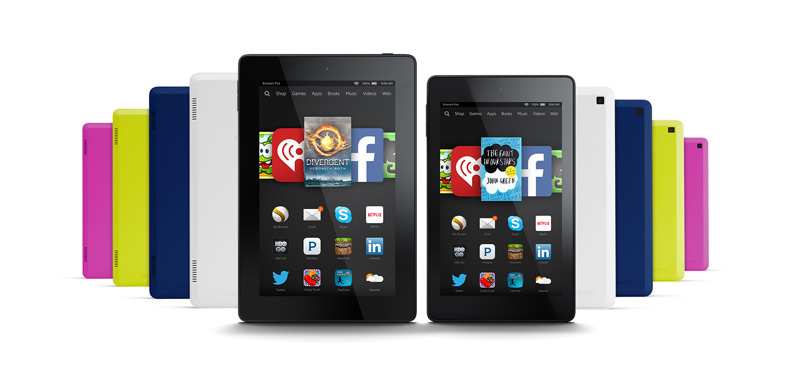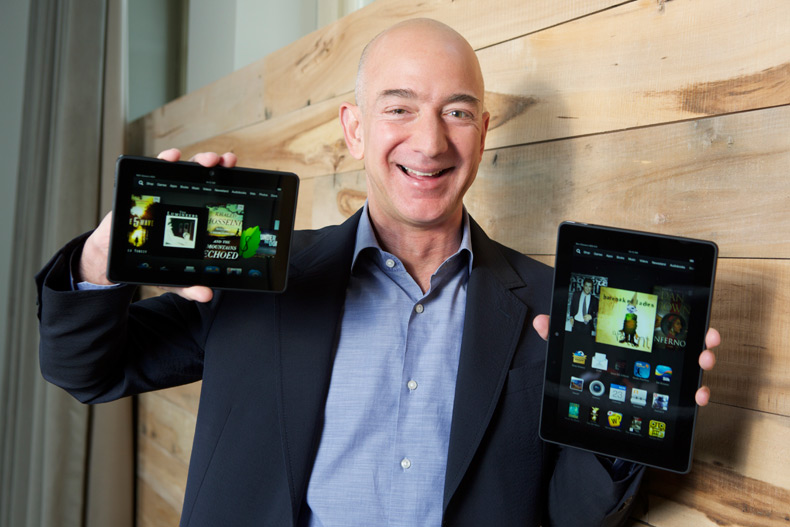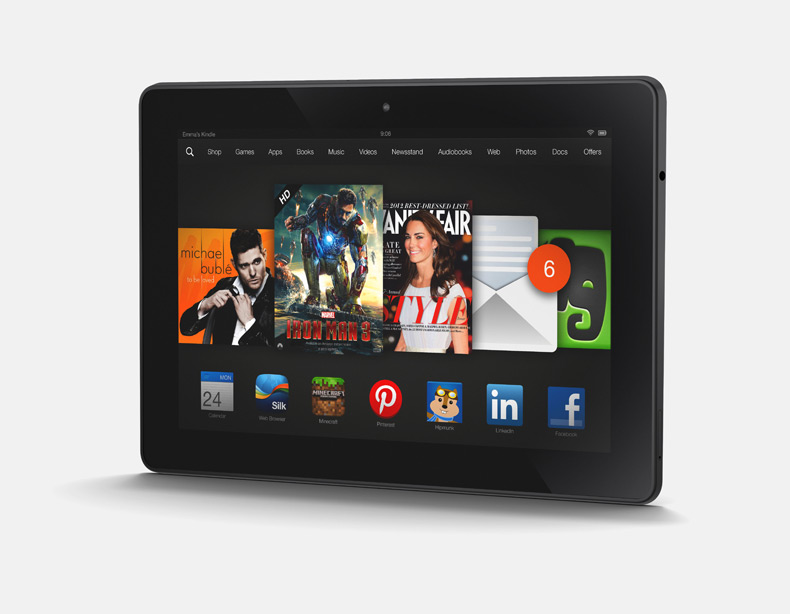Amazon reveals latest Kindle Fire HD and Fire HDX tablets
The tablet market is becoming just as competitive as the smartphone market – and Amazon has revealed its latest attempt to take on the likes of Apple and Samsung with the new Kindle Fire HD and Fire HDX devices.

With the new Fire HD models, there is a choice of two screen sizes on offer – 6in and 7in – and two storage options: 8GB or 16GB. Prices start at £79 and £119 for the HD6 and HD7 respectively, with both to start shipping in October.
Meanwhile, the new Fire HDX boasts an 8.9in display and is available with three storage options: 16GB, 32GB or 64GB. It's also available with wi-fi only or with 4G too, with prices starting from £329 for a 16GB wi-fi only version.
MORE: IFA 2014 – Amazon Fire TV gets UK release date

The new Fire HDX comes with a quad-core 2.5GHz processor on board – along with a 70 per cent faster graphics engine, a HDX display with 339ppi pixel density and a 8MP rear-facing camera.
For those who value the sound quality in a tablet, Amazon claims the HDX is the first tablet to come with Dolby Atmos on board, delivering a new "mobile headphone experience" with its multi-dimensional audio.
So how does Dolby Atmos work on the move? Dolby senior director of sound research Brett Crockett has explained in a blog post...
MORE: Dolby Atmos - What is it? How can you get it?
Get the What Hi-Fi? Newsletter
The latest hi-fi, home cinema and tech news, reviews, buying advice and deals, direct to your inbox.
Dolby Atmos? On a mobile device?

You might have heard about Dolby Atmos in recent weeks as a result of the new kit that's been launched to bring the cinema audio experience into your living room. Mobile, therefore, would seem a completely different kettle of fish.
Crockett admits that cinemas that feature Dolby Atmos sound can have "as many as 64 speakers and sophisticated sound-processing capabilities". For this new Amazon tablet, there are two technologies that have been brought together for that Atmos experience.
"Binaural headphone rendering" uses head-related transfer functions (HRTFs) to create surround sound on your headphones. An example of HRTFs, says Crockett, is where your right ear hears a car horn to your right, before the sound arrives at your left ear very shortly after.
The sound goes through your head, which leads to some absorption or reflection. But the brain works out the differences so you know where that sound is coming from. And Dolby has used that process to create virtual surround sound from a single headphone speaker.
Meanwhile, the second technology – "object-based audio" – tackles the lack of overhead sounds in a mobile surround system. Each sound in a film scene, for example, becomes an object, and with these objects comes data that explains where the sound should come from and where it should go.
For more, check out Crockett's blog here.
Additional Fire HD/HDX features

Back to the new Amazon tablets and ASAP is another feature. It stands for Advanced Streaming and Prediction, which is a feature that has been taken from Amazon Fire TV and "predicts" what films and TV episodes you'll want to view, before preparing them for "instant playback".
MORE: Amazon Kindle HDX 7 review
Meanwhile, the Fire HD devices come with a quad-core 1.5GHz processor and a 252ppi HD display, making it brighter than its forerunner. There's also Dolby Digital Plus Audio, Prime Instant Video Downloads and ASAP.
Amazon founder and CEO Jeff Bezos said: "The team packed an incredible amount of technology and innovation into the new Fire HDX; an exclusive HDX display, a powerful quad-core processor, a 70 per cent faster graphics engine, exceptional audio with Dolby Atmos, and the fastest wi-fi.
"The new Fire HD features a stunning HD display, quad-core processor, Dolby Digital Audio, front and rear-facing cameras, incredible reliability and Amazon’s unmatched content ecosystem."
Pete was content editor on What Hi-Fi?, overseeing production and publication of digital content. In creating and curating feature articles for web and print consumption, he provided digital and editorial expertise and support to help reposition What Hi-Fi? as a ‘digital-first’ title; reflecting the contemporary media trends. He is now a senior content strategist.
